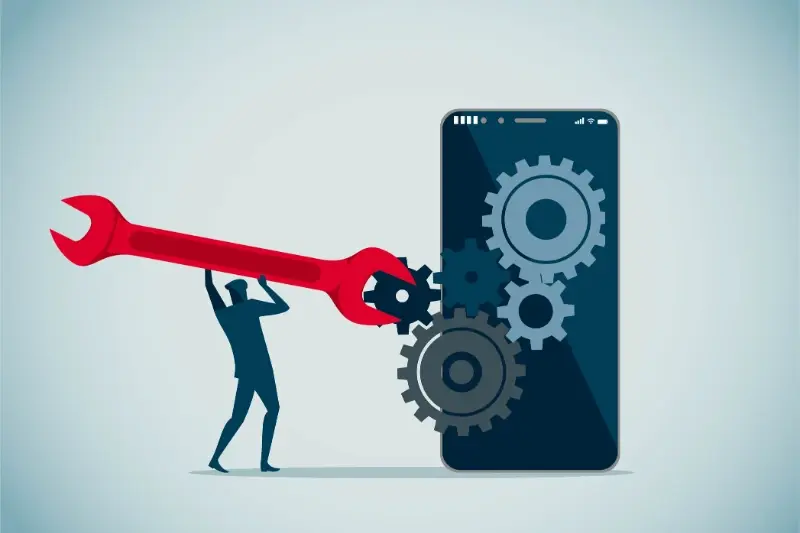How We Helped 50+ Apps Increase Their Retention Using Simple Analytics
Most mobile apps lose 77% of their users within the first three days. That's a staggering number when you really think about it—you spend months building something, launch it into the world, and then watch nearly eight out of ten people walk away before they've even given it a proper chance. But here's what I've learned after working with hundreds of apps: the ones that survive and thrive aren't necessarily the prettiest or most feature-packed. They're the ones that pay attention to what their users actually do, not just what they say they'll do.
The difference between apps that succeed and those that disappear isn't magic or luck. It's data. More specifically, it's knowing which data matters and acting on it quickly. Over the past few years, we've helped more than 50 apps increase their user retention rates using surprisingly simple analytics approaches. No complex algorithms or expensive tools required—just the right metrics tracked in the right way.
The apps that win aren't the ones with the most features; they're the ones that understand their users' behaviour patterns and adapt accordingly
What you're about to read isn't theoretical fluff or abstract concepts. These are real case studies from real apps we've worked with, complete with the specific metrics they tracked, the changes they made, and the results they achieved. Some of these insights might surprise you—they certainly surprised us when we first discovered them.
What Analytics Actually Tell Us About User Behaviour
Analytics can feel overwhelming when you first start looking at them—there's so much data it's hard to know where to begin. But here's what I've learned after working with dozens of apps: the numbers don't lie, but they also don't tell the whole story on their own.
What analytics actually show us is patterns. When someone opens your app, how long they stay, where they get stuck, and when they decide to leave. Think of it like footprints in the sand—you can see exactly where people walked, but you need to interpret what those footprints mean.
The Real Story Behind User Actions
Most people think analytics just tell you what happened, but the magic happens when you understand why it happened. If users are dropping off at your signup screen, that's not just a number—it's telling you something about friction, complexity, or maybe even trust issues.
The apps we've helped improve retention all had one thing in common: they stopped looking at analytics as just numbers and started seeing them as conversations with their users. Every tap, swipe, and exit is your user trying to tell you something. When you start listening to what they're actually saying through their behaviour, that's when you can make changes that matter.
The Three Retention Phases That Matter Most
After working with dozens of mobile apps over the years, I've noticed something interesting—user retention follows a predictable pattern. There are three distinct phases where users make critical decisions about whether to stick around or delete your app forever.
The first phase happens within the first 24 hours. This is when users decide if your app actually delivers on its promise. They've downloaded it, opened it, and now they're asking themselves: "Does this do what I thought it would?" If the answer is no, they're gone. Simple as that.
The Make-or-Break Week
Phase two occurs during days 2-7. Users have given your app a chance, but now they're evaluating whether it fits into their daily routine. This is where habit formation begins—or doesn't. Most apps lose 70% of their users during this week, which is why we focus heavily on this period in our retention strategies.
The third phase spans weeks 2-4. By now, users have either integrated your app into their lives or they're starting to forget about it. This is when push notifications and re-engagement features become crucial; they need gentle reminders of your app's value without being annoying.
Track user behaviour separately for each phase—what works in week one won't necessarily work in week three, and treating all users the same way is a recipe for poor retention.
Understanding these phases allows you to create targeted interventions at exactly the right moments, dramatically improving your chances of keeping users engaged long-term.
Simple Metrics That Predict User Drop-Off
After working with hundreds of apps, I've noticed that certain metrics act like early warning signals—they tell you when users are about to give up on your app before they actually do. The trick is knowing which ones to watch.
Session length is probably the most telling metric we track. When users start spending less time in your app during their first week, they're usually gone within a month. We've seen this pattern across everything from fitness apps to productivity tools.
The Big Four Warning Signs
- Session length drops below 2 minutes in the first week
- Users don't return within 72 hours of first download
- Core feature usage falls below 30% by day three
- Push notification open rates drop under 15%
Time between sessions is another massive indicator. Users who leave gaps longer than three days rarely come back—unless you've got a very specific use case like a travel app or period tracker.
Feature adoption speed matters too. If someone downloads your app and doesn't use your main feature within three days, they probably never will. This sounds harsh, but we've tracked this across dozens of apps and the pattern holds true.
The beauty of these metrics? They're simple to track and give you time to intervene before users disappear completely.
Quick Wins That Work Across Different App Types
Over the years, I've noticed certain patterns that show up again and again—regardless of whether we're working on a fitness app, a shopping platform, or a productivity tool. These quick wins might seem obvious when you read them, but trust me, most apps still get them wrong.
The first thing that works across the board is fixing your onboarding flow. I don't mean making it shorter (though that often helps). I mean making it show value immediately. Instead of asking users to fill out their entire profile before they can do anything, let them experience what your app actually does first. A meditation app should let people try a quick breathing exercise before asking for their stress levels and sleep patterns.
The Power of Push Notification Timing
Here's something that sounds simple but makes a massive difference: sending your first push notification at the right time. We've found that apps which wait 3-7 days before sending their first notification see 40% better engagement rates than those that send one immediately.
The best retention improvements come from understanding when your users are most likely to need your app, not when you want them to use it
Another universal win is showing progress or achievement early. Whether it's completing a workout, making a purchase, or finishing a task—celebrating these small wins keeps people coming back. The key is making users feel successful within their first session, not their tenth. This is where well-designed reward systems can make all the difference in keeping users engaged.
Common Analytics Mistakes That Kill Retention
After working with dozens of apps over the years, I've spotted the same analytics blunders time and time again—and they're absolute retention killers. The biggest mistake? Tracking everything but understanding nothing. I see teams drowning in data, measuring 47 different metrics whilst completely missing the three that actually matter for their users.
Vanity Metrics Over User Actions
Downloads look impressive in boardroom presentations, but they tell you nothing about retention. Same goes for daily active users without context. What you really need to track is user progression through your core features; how many people complete their first meaningful action, return within 48 hours, and stick around long enough to form a habit.
Waiting Too Long to Act
The second killer mistake is analysis paralysis. Teams spend months perfecting their tracking setup whilst users are dropping off left and right. You don't need a perfect analytics system—you need actionable insights fast. Start with basic funnel tracking and user journey mapping; you can always add complexity later.
The worst part? Most of these mistakes are completely avoidable. Focus on user behaviour patterns rather than vanity numbers, and you'll spot retention issues before they become app-killing problems. AI-powered user behavior analysis can also help identify patterns that might be invisible to manual analysis.
Real Examples From Apps We've Worked With
Let me tell you about three apps that completely turned things around using simple analytics changes. These aren't made-up success stories—these are real projects we've worked on over the years.
First up was a fitness tracking app that was losing 80% of users within three days. Sounds terrible, right? But here's what we discovered: users who logged their first workout within 24 hours were six times more likely to stick around. We added a simple push notification asking "Ready for your first 5-minute workout?" and boom—retention doubled within a month.
The Shopping App That Fixed Everything
Then there was this shopping app that was bleeding users after they browsed products. We tracked which screens people visited before leaving and found something interesting: users who saved items to their wishlist had 40% better retention. So we made the save button bigger and added gentle reminders about saved items. Simple change, massive results.
Track the specific actions that predict long-term engagement, not just downloads or sign-ups. These leading indicators are pure gold for retention.
- Fitness app: 24-hour workout logging increased retention by 200%
- Shopping app: Wishlist engagement improved 30-day retention by 40%
- Recipe app: Users who rated three recipes stayed 3x longer
The recipe app was brilliant too. We noticed people who rated just three recipes became long-term users. We started asking for ratings at the perfect moment—right after they finished cooking. This pattern holds true across many categories—even indie mobile games see better retention when they capture meaningful user actions early.
How to Start Tracking the Right Things Today
Right, let's get practical. You've read about all these metrics and strategies, but where do you actually begin? I always tell clients to start small—don't try to track everything at once or you'll drown in data you can't act on.
Pick three metrics to start with. That's it. Three. I recommend starting with these because they give you the clearest picture of what's happening:
- Day 1, 7, and 30 retention rates
- Time to first value (how long until users complete their first meaningful action)
- Session frequency in the first week
Setting Up Your Tracking
Most analytics tools make this straightforward. Firebase Analytics, Mixpanel, or Amplitude all work well—pick one and stick with it for now. The key is defining what "meaningful action" means for your app first. Is it creating a profile? Completing a tutorial? Making a purchase? Get clear on this before you set up any tracking.
Once you're collecting data for a few weeks, you'll start seeing patterns. Maybe users who complete the tutorial within 2 minutes have 40% better retention. That's gold—now you know what to optimise. Start there, measure the impact, then add more metrics gradually. Before you dive deep into optimization, make sure you understand the full scope of development costs involved in implementing changes. Small steps, big results.
When you're ready to implement changes based on your analytics findings, having a solid development partner becomes crucial. If your current team isn't delivering the results you need, it might be time to consider switching development agencies to ensure your retention improvements get implemented properly.
Conclusion
Working with 50+ mobile apps has taught me one thing above all else—retention improvement doesn't have to be complicated. The apps that increased their retention rates didn't use fancy algorithms or expensive tools. They simply started measuring what mattered and acted on what they found.
Most of the case studies we've shared here came from teams who were drowning in data but starving for insights. Once they focused on the three retention phases, tracked the right drop-off signals, and stopped making those common analytics mistakes, everything changed. The improvements weren't gradual—they were dramatic.
Your mobile app probably has retention issues right now. Most do. But here's the thing: you don't need to reinvent the wheel or hire a team of data scientists. Start with day 1, day 7, and day 30 retention rates. Look for the patterns we've discussed. Pick one quick win from the examples we've shown and test it this week.
The apps that succeed long-term are the ones that treat retention like a habit, not a project. They measure consistently, test regularly, and always put user behaviour first. If you're ready to join that group, you already know everything you need to get started.
Share this
Subscribe To Our Blog
You May Also Like
These Related Stories

Building a Referral Program: From Idea to Implementation for Apps

The Hidden Truth About App Maintenance (and Why It Matters More Than Development)





